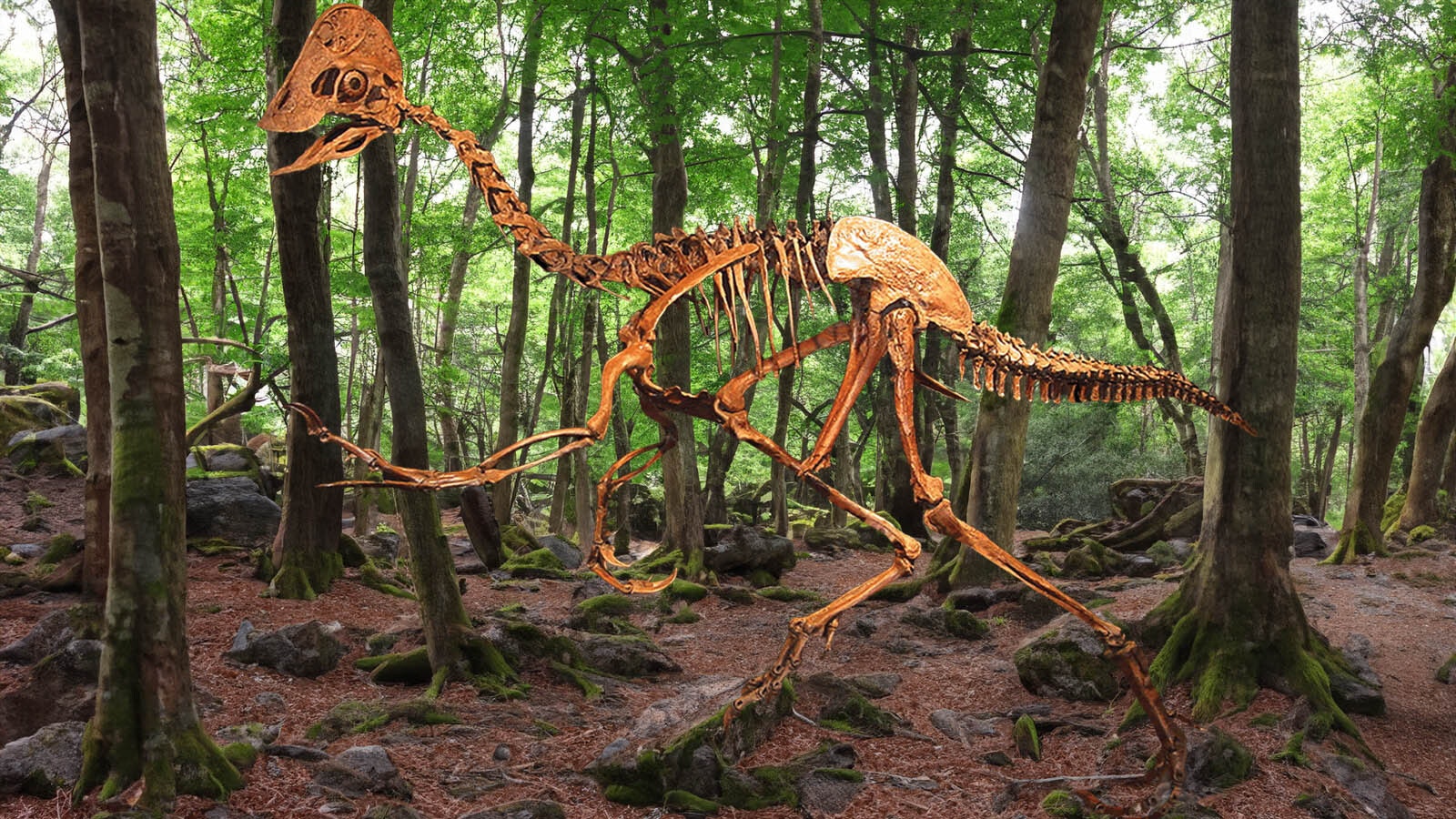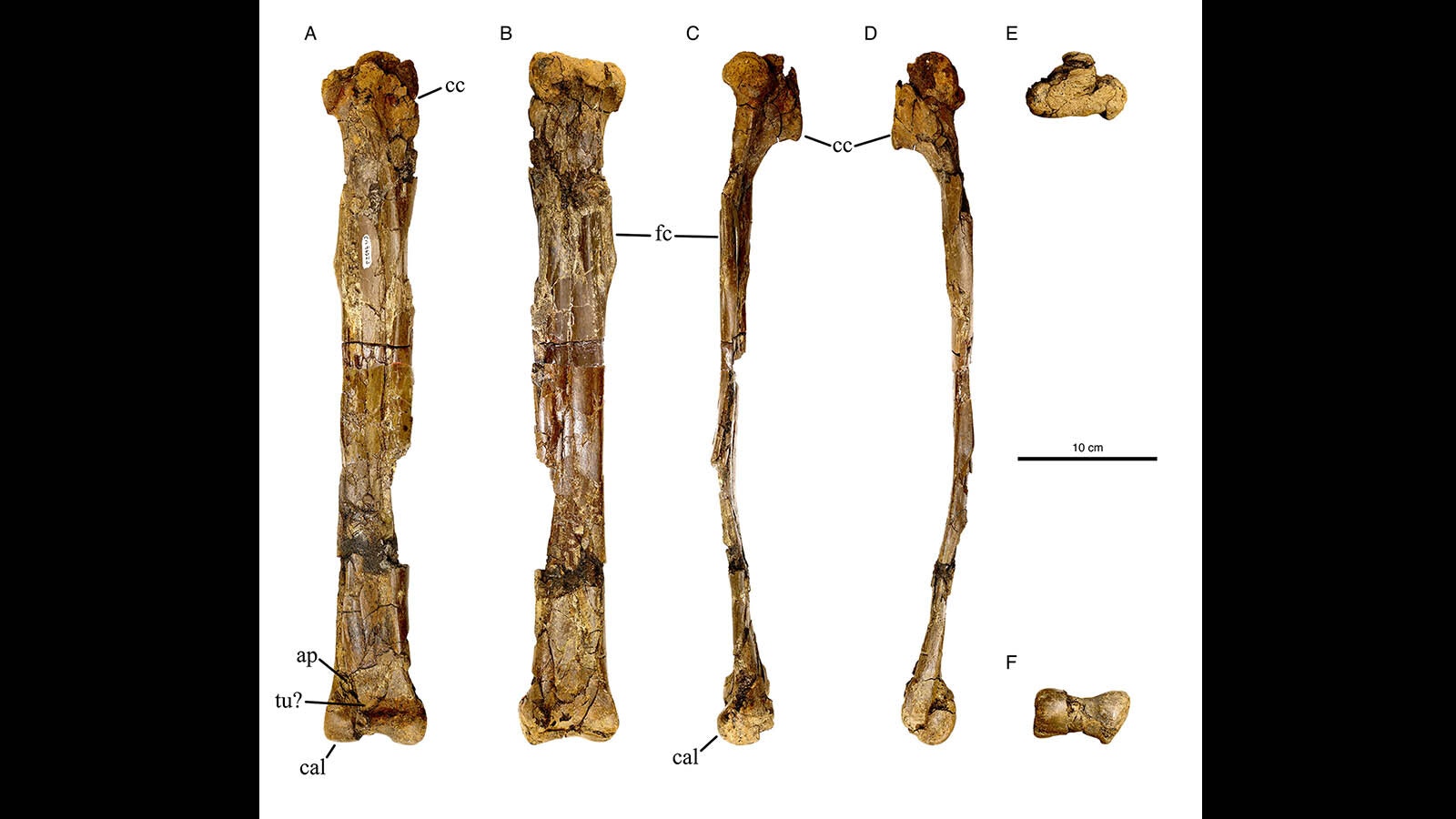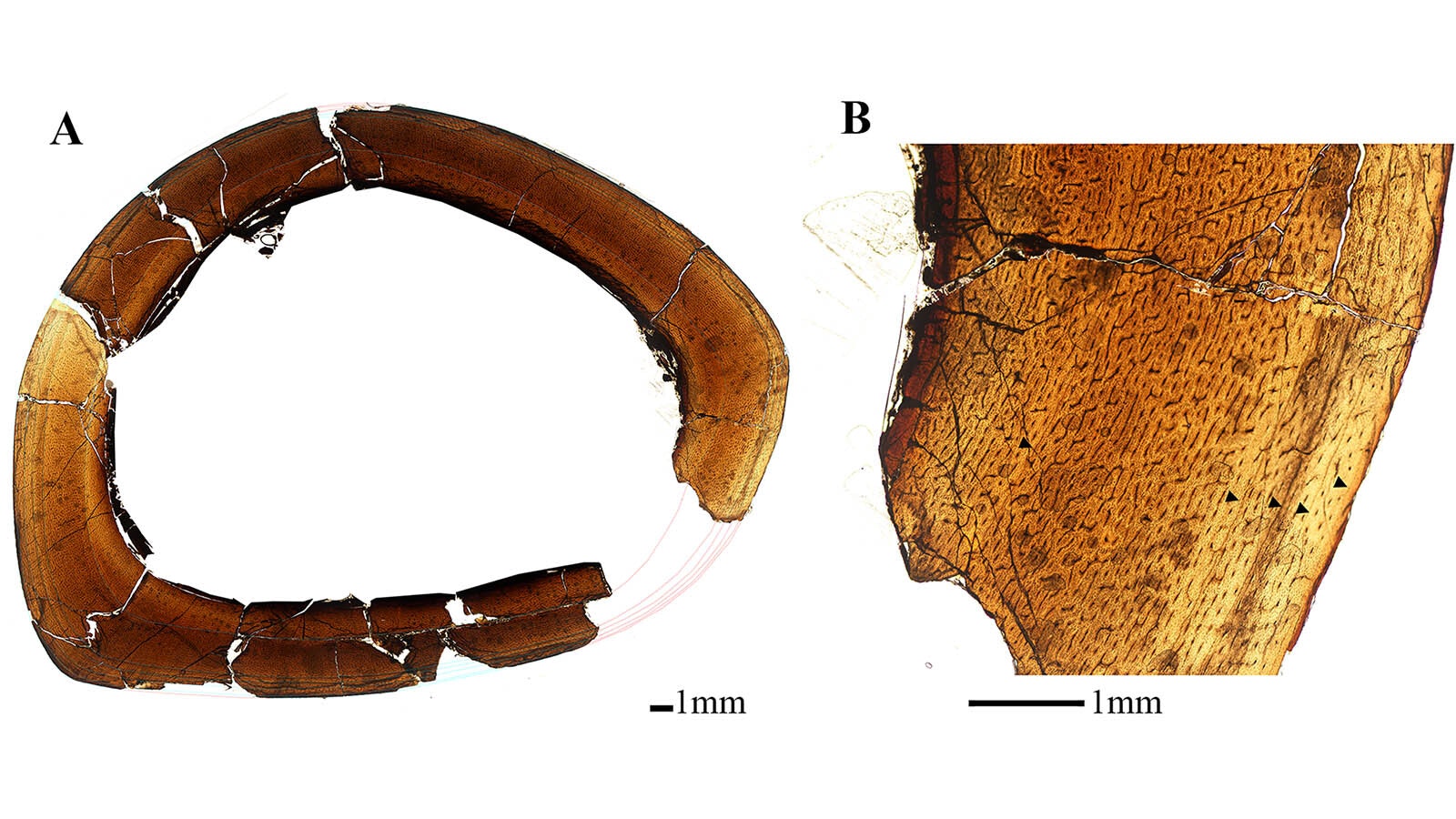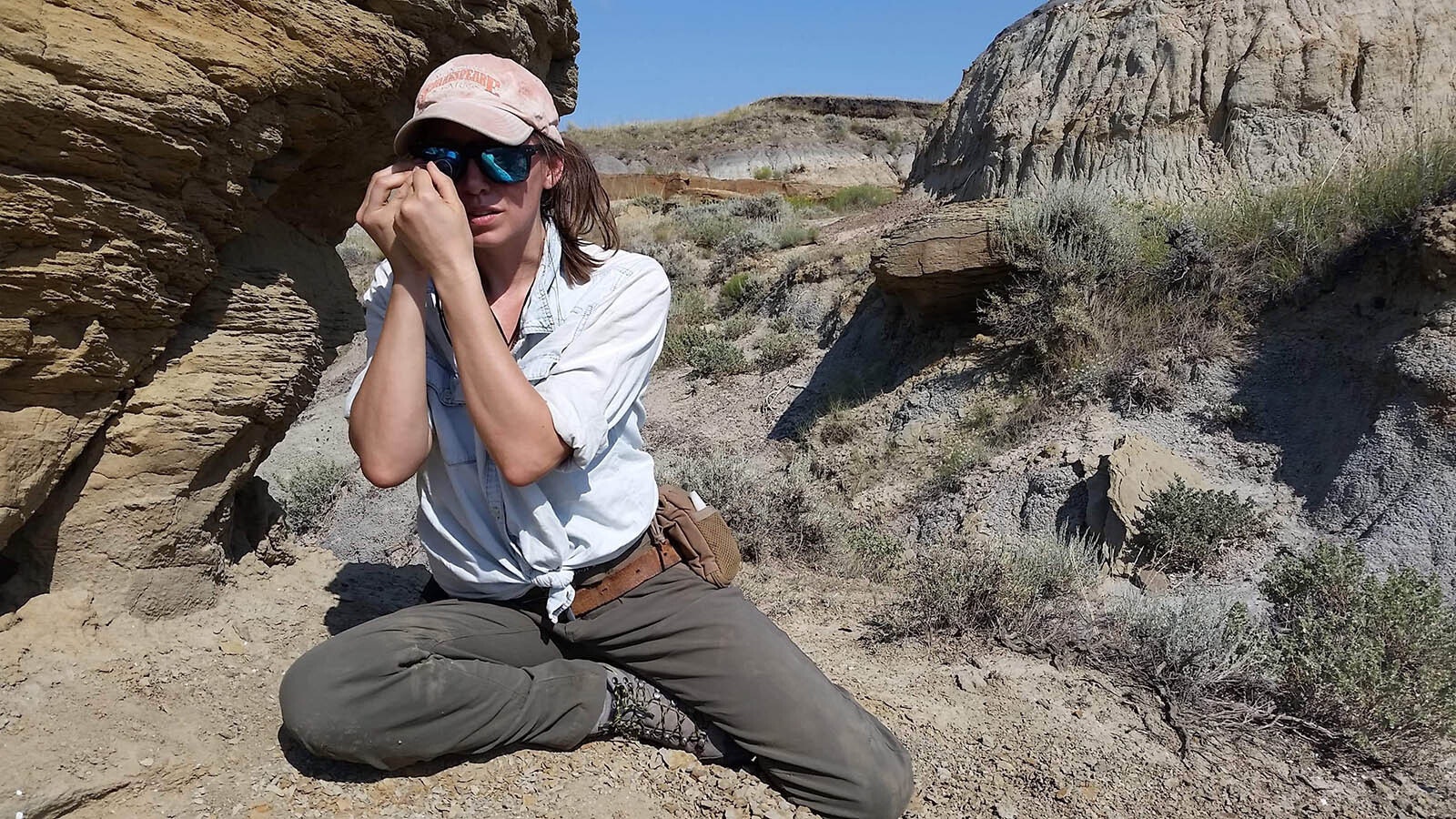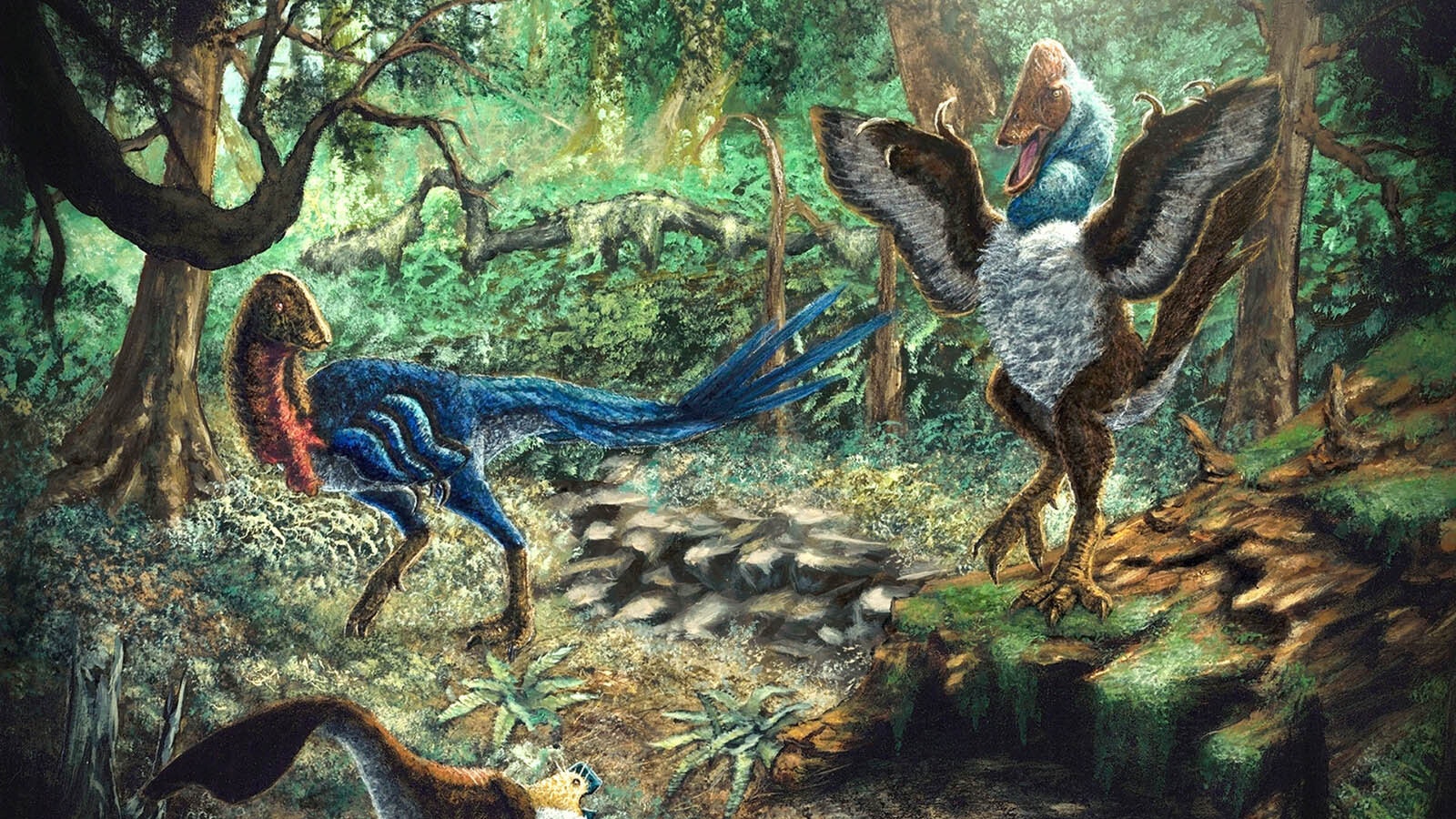When paleontologists found a drumstick from what can best be described as a 68-million-year-old chicken from hell, they needed expert on prehistoric hell chickens to confirm it as a new species. And they found her in Wyoming at Laramie County Community College.
A recently published scientific paper announced a new species of dinosaur from the Hell Creek Formation of South Dakota.
Eoneophron infernalis, described in the paper as “the Pharoah’s dawn chicken from hell,” is a kind of two-legged theropod called a caenagnathid, which is distantly related to the famous T. rex and velociraptor (and chickens, by proxy).
Unlike modern chickens, these could grow to be about 170 pounds.
Jade Simon, an adjunct geology instructor at LCCC’s Albany County Campus, is one of the paper's authors. Her specialty is the lineage of Late Cretaceous hell chickens.
“They brought me on to help compare with the other caenagnathids that I study because I do a lot of this,” she told Cowboy State Daily. "We looked over all the specimens, compared my data from other specimens I had or was studying and figured out together that it was a new species.”
Egg Thieves And Hell Chickens
Simon is a vertebrate paleontologist with degrees from West Virginia University and Montana State University. While she teaches geology at LCCC, she’s also working on her Ph.D. in ecology and evolutionary biology from the University of Toronto.
She explained that a caenagnathid is a kind of oviraptor, aka “egg thief,” a group of dinosaurs that combine the body of a nimbly built meat-eating dinosaur with a parrot-like beak at the end of a long, narrow neck. They technically were less like chickens and more like even more murderous and monstrous geese.
“Oviraptors are a group that's really close to the bird lineage,” she said. “They're very bird-like, with a beak instead of a long jaw with teeth and feathers over their whole body. They're really interesting animals. I study the growth and diversity of that group.”
Caenagnathids are a family of large oviraptors. The largest one found (so far) is gigantoraptor from Mongolia, which is 26 feet long and weighs around 2 tons.
Compared to their Cretaceous contemporaries like T. Rex and Triceratops, which lived at the same time and place, caenagnathids are very rare in the Hell Creek and Lance formations of North America. Most are only known from fragmentary skeletons.
Another caenagnathid, Anzu, has been found in the Hell Creek Formation. A fully grown Anzu could grow as much as 12 feet long and almost 5 feet tall — a truly tremendous hell chicken.
Simon Says So
Simon’s dissertation involved studying bones from dozens of caenagnathids from the United States and Canada. That’s why she was enlisted to assist in the study of the new fossil, a partial leg, in the collections of the Carnegie Museum of Natural History in Pittsburgh, Pennsylvania.
“At first, Kyle Atkins-Weltman, the lead author of the study, and his advisor, Dr. Eric Snively, thought it might be a juvenile,” she said. “But when we looked at the bone histology, cut it up and put it under a microscope, we figured out that it was actually mature already. It's fully grown.”
The drumstick the paleontologists studied came from a fully grown animal that was only 3 feet tall. Since it was too small and old to be from a juvenile Anzu, they realized it must have come from a new type of caenagnathid.
Establishing a new dinosaur species takes a lot of research, and proof as solid as the rocks preserving the fossils. Simon also highlighted some “unique anatomical features” in the leg and ankle, suggesting that the bone belonged to its own dinosaur and not a smaller version of its larger relative, Anzu.
Put it all together, and the paleontologists concluded that their drumstick was a new item on the Hell Creek Formation’s menu. Thus, Eoneophron was named.
Not Chickening Out
Simon said the discovery of Eoneophron is an exciting addition to an ongoing debate. Their research has found a new species of dinosaur living at a time when most paleontologists believe dinosaur diversity was declining.
The Hell Creek Formation preserves the last days of the dinosaurs before the Cretaceous-Paleogene Extinction, when an extraterrestrial object, either a comet or meteor, slammed into Earth 66 million years ago. That impact heralded the end of the dinosaurs' 160-million-year reign.
For decades, paleontologists believed dinosaurs were already on the decline for millions of years before the impact. Simon said the discovery of Eoneophron suggests that the decline might not have been so dramatic, if it was happening at all.
“For a long time, paleontologists have thought that it's possible that dinosaurs were declining,” she said. “They were less diverse, and there were fewer of them before the asteroid impact, so maybe they were on their way out already. A lot of recent information, including this study, is showing the opposite. It looks like a lot of different groups were diversifying.”
Wyoming could be an essential player in this ongoing debate. Ongoing excavations for the Triceratops Gulch Project in Glenrock suggest more dinosaur diversity at the end of the Cretaceous Period than previously believed.
“Dinosaurs were doing great,” Simon said. “They weren't really declining. They were actually diversifying before the asteroid.”
A Paleontologist’s Dream
Simon is still working on her doctorate dissertation on caenagnathids. But now, she gets to include a new species she helped discover.
Once she gets her Ph.D. in paleontology, she’s unsure where her research will take her. However, she’s hopeful that it’ll keep her in Wyoming.
“I would love to stay in Wyoming,” she said. “The state has an incredible and unique fossil record. You can find everything from so many different stages of Earth's history. Some of the first evidence of life on our planet, up through dinosaurs and into the Eocene, which is pretty phenomenal.”
In the meantime, Simon still has more hell chicken mysteries to sort out. She hopes future excavations in the Lance Formation in eastern Wyoming will reveal more caenagnathid fossils, including Eoneophron.
No Eonenophron fossils have been confirmed from Wyoming, but the hell chicken would have had a home in the Cowboy State 68 million years ago. Fossils and footprints from its larger contemporary Anzu have been found in Newcastle, Glenrock and elsewhere in eastern Wyoming.
Having more than one South Dakota drumstick from a species she helped discover would be great, but Simon’s not too particular. As long as she’s finding fossils in Wyoming, she can keep dreaming about hell chickens while living in a prehistoric heaven.
“You’ve got it all in Wyoming,” she said. “It's kind of a paleontologist's dream to be here.”
Andrew Rossi can be reached at arossi@cowboystatedaily.com.

